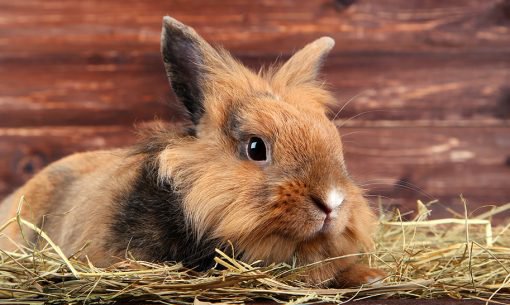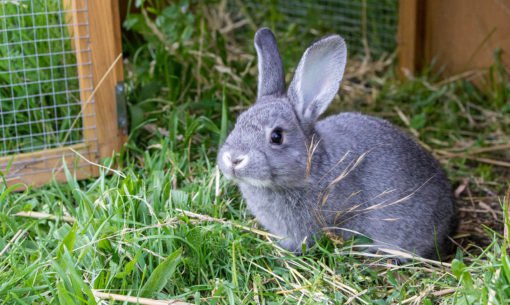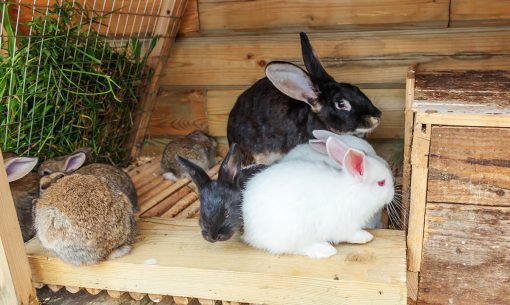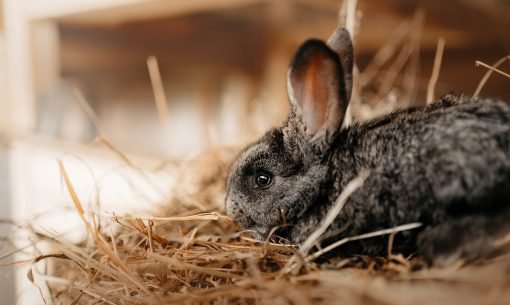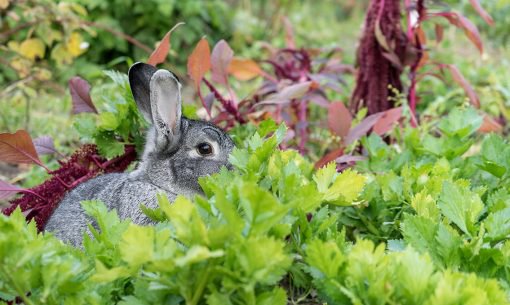The ultimate guide to caecotrophs
This article will cover everything you could ever want to know about caecotrophs.
We’ll be discussing what caecotrophs are, the journey from nugget to caecotroph and how you rabbit’s caecotrophs can give you a better insight into their overall health.
What is a caecotroph?
Let’s start with the basics. Our expert, Dr Molly Varga (qualified vet and RCVS Specialist in Zoo and Wildlife Medicine) says that, “A caecotroph is the end stage of fermentation in the caecum that allows all of the digestible products in the diet to be absorbed by the rabbit.”
To create a caecotroph, food must pass through a rabbits digestive tract twice and, during this process, both caecotrophs and indigestible poop pellets are produced.
So, in order to digest their food twice, bunnies will eat these caecotroph pellets and, while eating your own poop may sound a little strange to us, it’s a completely normal and essential process for rabbits.
Why do owners need to know about caecotrophs?
Specialist vet Molly says owners need to be able to recognise caecotrophs, “Because if they’re finding them more often, then something has changed with their rabbit’s ability or willingness to eat these. This could be a result of a change in diet, issues with mobility or pain (e.g. dental disease or arthritis) or it could mean that the rabbit’s appetite is affected (e.g. kidney disease).”
Molly goes on to explain, “If your rabbit’s caecotrophs change in consistency- this can be secondary to infection, but is not the same as true diarrhoea. Normal caecotrophs that are left in the environment are often mistaken for diarrhoea by owners. These can get stuck in the rabbit’s fur which can be one reason why rabbits get flystrike. When caecotrophs become attached to a rabbit’s fur, this can also cause inflammation of the underlying skin, which is what attracts flies.”
The importance of caecotrophs
So why do bunnies need to eat their caecotrophs? The answer lies in their digestion. While most animals can obtain the maximum nutrition from their food by digesting it just once, bunnies like to eat food that’s very high in fibre such as:
- Hay
- Grass
- Leafy greens including kale, savoy cabbage and spinach
And these foods need to pass through the digestive tract twice for rabbits to obtain the maximum amount of nutrition from them.
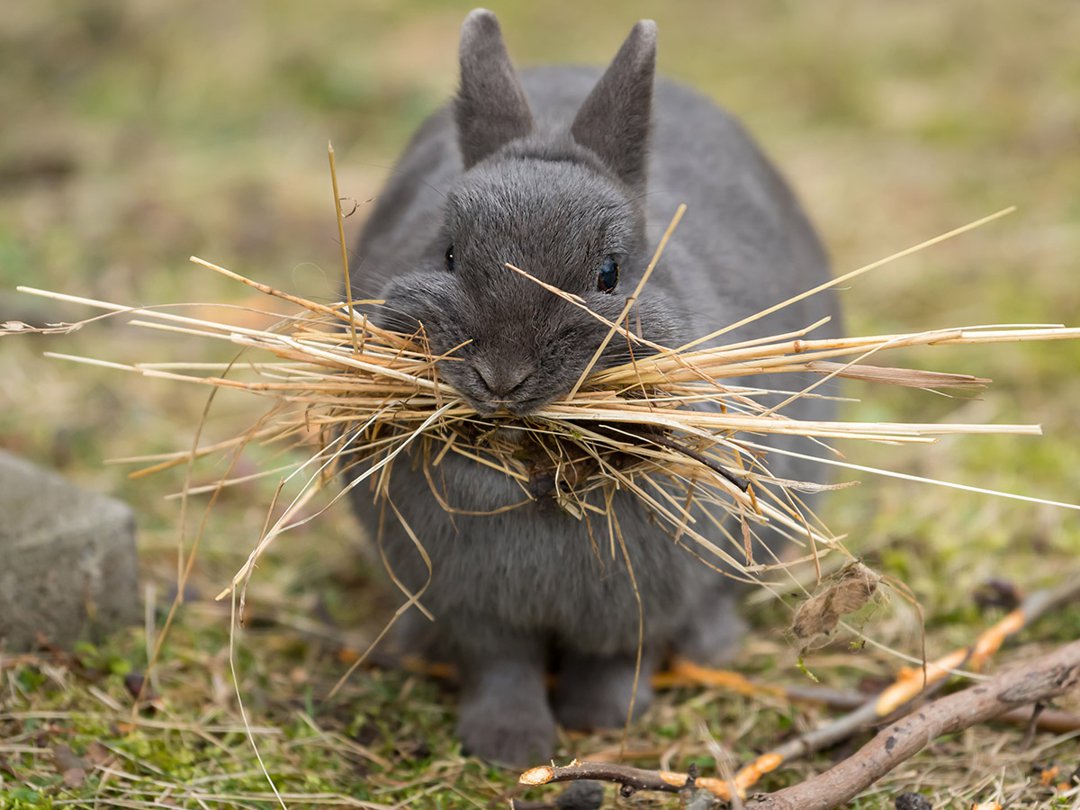
The journey of a nugget
While the journey that a nugget takes to become a caecotroph is quite complex, it’s also very important- so we’ve broken it down to take you through it step-by-step:
1) Your bunny eats their food for the first time, they give it a good old chew, before it enters their digestive system. The longer chewing times that are required for tough, fibrous foods is a positive for rabbits as they have constantly growing teeth that need to be constantly worn down. And fibre is essential for rabbits to ensure they stay healthy.
2) The food will pass through the upper digestive system (which includes the stomach and small intestines) and some nutrients will be absorbed here.
3) The partially digested food will then move on to the lower digestive system, entering the caecum, which gets to work fermenting the partially digested material. The fermentation process is where the food gets mixed up with healthy gut bacteria, allowing your bunny to unlock lots of the useful nutrients it contains.
4) The food material then enters the proximal colon and the caecum, where it’s separated into two parts- digestible and indigestible. The indigestible food is used to help keep your bunny’s gut moving along – a process called peristalsis. Once the indigestible part of the food matter has moved through the rest of the digestive tract, it will then be excreted as hard, fibrous faeces.
5) The other digestible part of the food will either remain in the caecum (or re-enter the caecum if it’s reached the colon) for further fermentation and can remain there for as long as four hours! But even in this time-period your bunny still won’t be able to digest all the nutrients and energy that is available.
6) The digestible food will then be coated with a layer of protective mucus before being pooped out by your bunny as a fully formed caecotroph.
7) Now it’s time for round two! Your bunny will then eat the caecotroph (often directly from their bottom) and the caecotroph will pass through their digestive system for a second time. This time, when the caecotroph passes through the upper digestive system, the mucus layer that coats the pellet will protect the good bacteria that the caecotroph contains from being broken down too quickly by acid as it re-enters the stomach. The caecotroph will then be broken down by further fermentation in the stomach and small intestines, allowing your bunny to extract all the vital nutrients they need.
And if you want to know more about rabbit poo, and how it can give you an insight into your rabbit’s health, read our article, ‘7 things you really need to know about rabbit poo’.
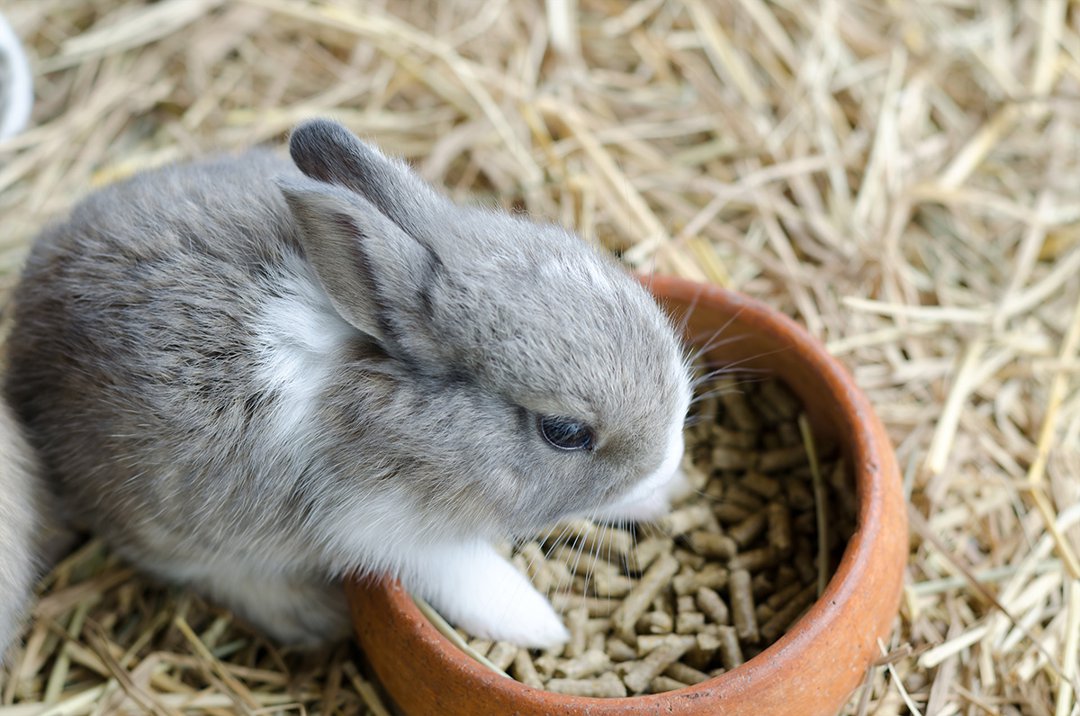
Young rabbits and caecotrophs
For young, newly weaned bunnies caecotrophs are just as (if not more) important. This is because younger bunnies will eat the caecotrophs produced by their mother (or other rabbits in their group) to help to colonise their digestive tract with healthy gut bacteria which is essential for normal bunny digestion. How’s that for a bonding experience?
Two types of poop
As mentioned previously, your rabbit’s digestive system is very clever as it’s able to separate digestible and indigestible food material, and this means that two different types of poop are formed.
-
- Dry poop pellets: these will be dry, fibrous, round in shape and will crumble when squashed. They’re normally a light-brown colour and you can often actually see the small bits of hay and other fibrous material that the pellet is made up of. This pellet is the indigestible fibrous plant material that we discussed earlier.
-
- Caecotrophs: Molly describes caecotrophs as, “Shiny, dark faeces with a strong smell, that generally stick together like bunches of grapes. Most rabbits eat these as soon as they are produced, however they are occasionally found in the environment if they aren’t eaten.”
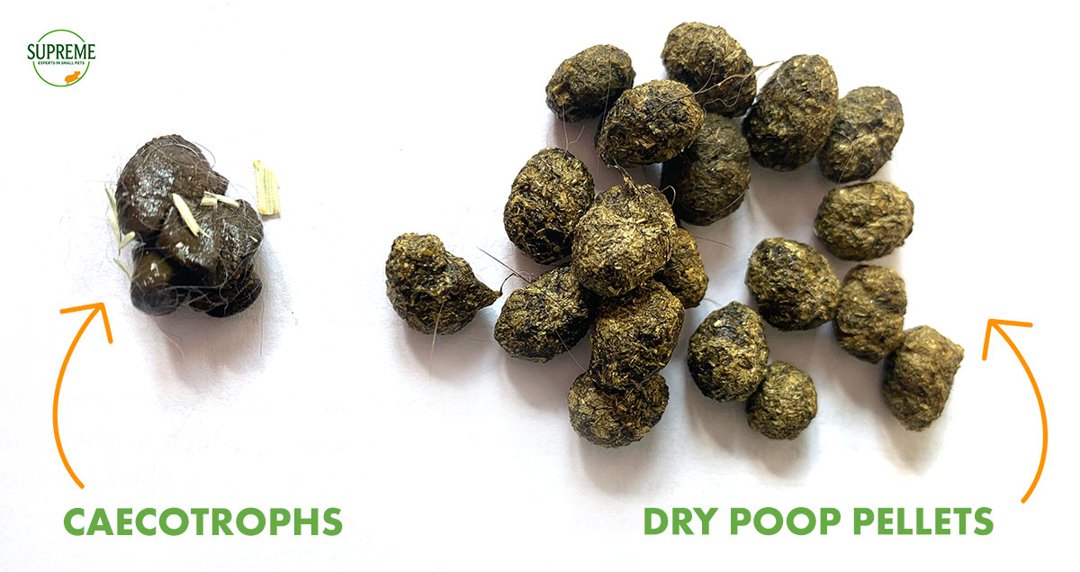
Caecotrophs and bunny health
Monitoring your bunny’s poo is really important as it can give you an insight into their overall health. And if you start to notice lots of uneaten caecotrophs in your rabbit’s hutch, this can sometimes indicate that something isn’t right and there are two main reasons why this can happen:
1) An inappropriate diet can be a reason why your bunny isn’t eating their caecotrophs. This is because diets that are low in fibre and high in protein and sugar can prevent your bunny’s digestive tract from working properly. This means it’s super important to make sure that your bunny gets the right diet- which should consist of at least 80% hay or grass. You can read more about the best diet for your rabbit here .
2) Health conditions may also reduce caecotroph ingestion and may include arthritis, neurological disease, dental problems and obesity. These conditions can prevent your bunny from reaching their back end, as your rabbit will often eat the caecotrophs directly from their own bottom. Not only is eating caecotroph vital for your bunny’s nutrition, if your rabbit is unable to remove caecotrophs from around their bottom, they may remain stuck there and this can lead to soreness, infection and a very serious condition called flystrike may develop- you can read about this here .
So, if you start seeing lots of caectrophs in your rabbit’s hutch or run and can’t work out why, it’s always best to speak to your vet for advice.
What to do if your rabbit stops producing caecotrophs
Caecotrophs can be really tricky to monitor as you won’t often see them because you bunny often eats them straight away! That being said, if you normally do manage to spot your rabbit’s caecotrophs and notice that your bunny isn’t producing them anymore there are also several reasons why this can happen including:
- Dental problems
- Not enough dietary fibre
- Too many sugary treats
- Other underlying health conditions
Again, if you have any concerns regarding your bunny, it’s best to contact a veterinary professional.
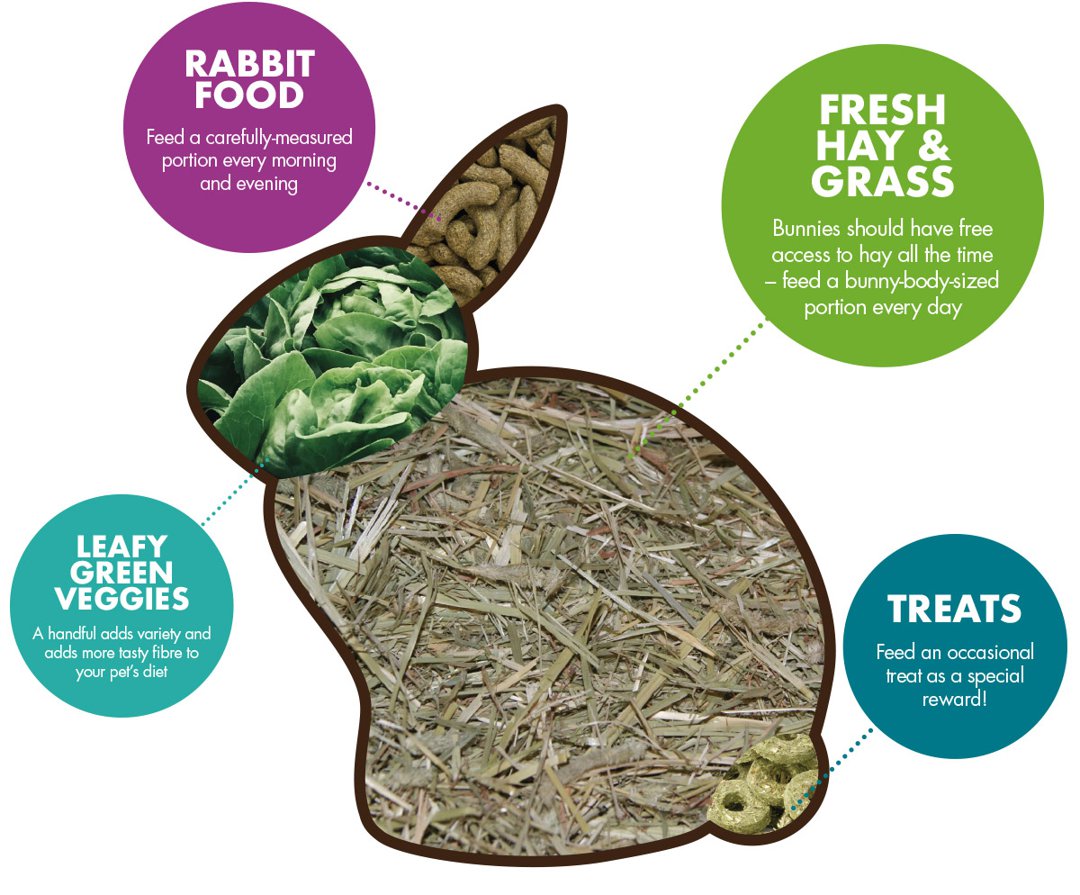
Gut stasis
If you notice your rabbit stops producing caecotrophs or dry poop pellets, it could also indicate they have gut stasis- a serious condition in bunnies.
Gut stasis is a condition where the gut slow down or stop moving completely. This can be dangerous for rabbit as they need their guts to move in order to squeeze their food along. If a rabbit’s guts stop moving this can lead to build up of bad bacteria, which will release gas into the digestive system and cause painful bloat, which will stop the bunny from wanting to eat.
Gut stasis can be caused by:
- Stress
- Dental disease
- Pain cause by another illness
- Dehydration
- Insufficient dietary fibre
- Something blocking the intestines
As well as you rabbit producing fewer or no poops and caecotrophs, other important signs that could indicate your rabbit has gut stasis are:
- Not wanting to eat as much or not eating at all
- Hunched or bloated appearance
- Tiredness
- Teeth grinding/drooling or grunting
If you see any of these signs, or think your bunny simply isn’t right, it’s really important to speak with your vet straight away.
Want to know more about bunnies?
So that concludes our guide to caecotrophs, we hope you’ve found it helpful!
We’ve tried to squeeze in as much information as we possibly can, but we think you’ll agree that this article is just the tip of the iceberg when it comes to learning about bunnies!
If you would like further information about the topics covered, or if there is something else you’d like to know about rabbits, we have lots of other informative bunny articles available here.

